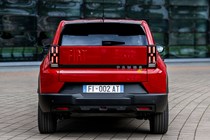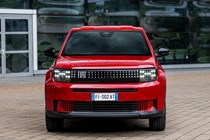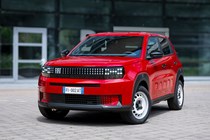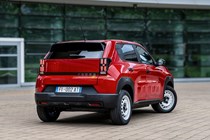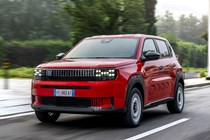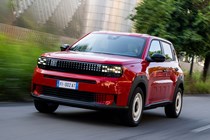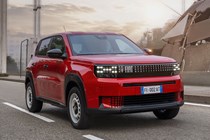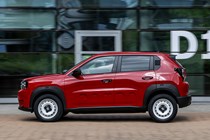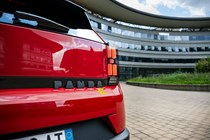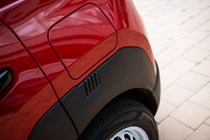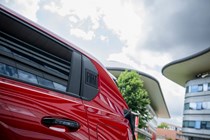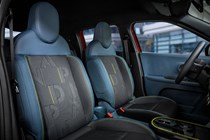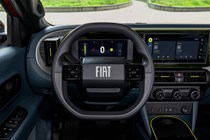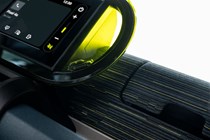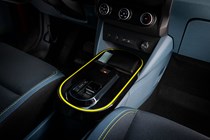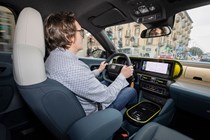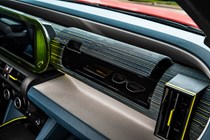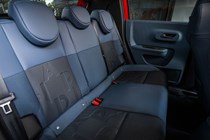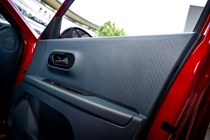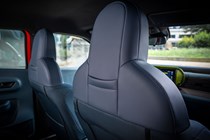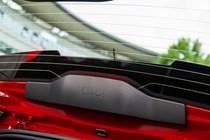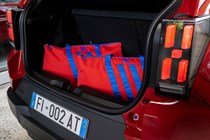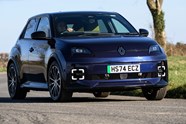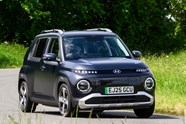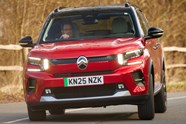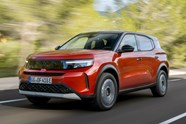
Fiat Grande Panda review
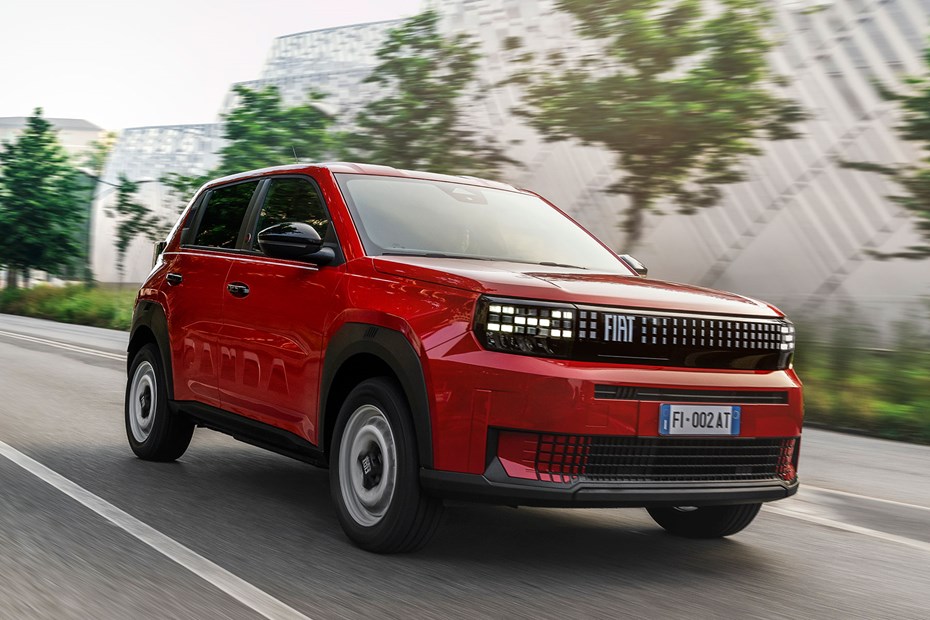
At a glance
| Price new | £21,035 - £24,035 |
|---|---|
| Road tax cost | £195 |
Get an insurance quote with

|
|
| Fuel economy | 3.6 miles/kWh |
| Range | 199 miles |
| Miles per pound | 5.7 - 10.6 |
| Number of doors | 5 |
| View full specs for a specific version | |
Available fuel types
Fully electric
Pros & cons
- Wonderful design and style throughout
- Clever practicality features
- Comfortable and easy to drive
- Efficiency hasn’t impressed us so far
- Adults may find the back seats uncomfortable
- Interior may be too wild for some
Fiat Grande Panda Hatchback rivals
Overview
The Fiat Grande Panda Electric is another new contender in the increasingly fierce contest for our list of the best small electric cars. As with key rivals the Renault 5 E-Tech and Hyundai Inster, it combines eye-catching design and neat details with tempting pricing, backed up in this case by some clever features and solid practicality for a car less than four metres long.
The performance and driving range figures are adequate rather than mind-blowing – both those premier alternatives claim to go further than the 199-mile distance put forward by Fiat. But the Grande Panda isn’t just temptingly priced, Fiat’s being downright aggressive: with the entry-level model costing just £20,975, the Grande Panda is claiming the title of cheapest EV (electric vehicle) in its supermini-sized market segment.
It’s also the first of what’s planned to be a whole new family of Fiat Panda models. So we’re pleased to report that it sets an excellent early standard, and is certainly a car to consider very carefully if you’re in the market for a small, affordable EV.
What’s it like inside?
I’ve been driving the range-topping Fiat Grande Panda La Prima model on the international launch event in Italy, and this version is a slightly spicier £23,975. For that, though, you do get a full suite of standard equipment, including some of the more stand-out interior features.
For while all Grande Panda models feature the 10.25-inch infotainment touchscreen, only La Prima gets the Bambox dashboard treatment, which is made from 33 per cent real bamboo for improved sustainability. The slightly shiny plastics elsewhere around the interior are made from recycled beverage containers – approximately 140 of them per car.
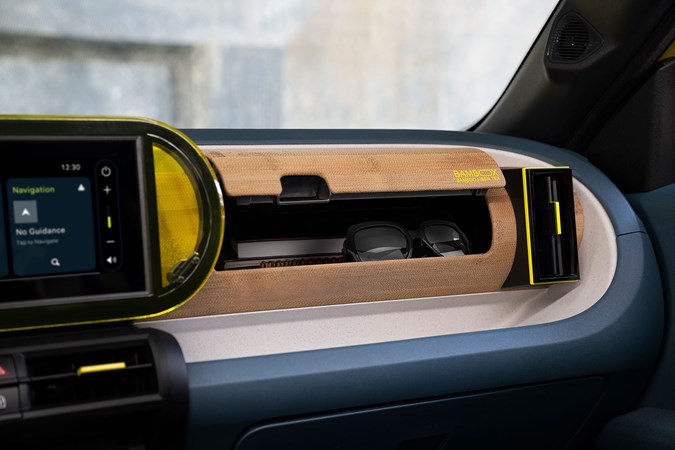
But regardless of what it’s made out of, it looks great in here. The detailing is intricate and cohesive, the quality solid and robust rather than plush but seemingly all the more appropriate for it. Two gloveboxes and a shelf that harks back to the ‘pocket’ dashboard of the original 1980 Panda mean there’s plenty of storage space, too.
The tech includes a digital instrument cluster and central infotainment screen on all Electric models, both 10.25-inch in diameter and pin sharp. Neither is overly complex nor deeply informative, but the iconography is exceptionally good for a low cost car and Android Auto – standard along with Apple CarPlay – proves clear and responsive.
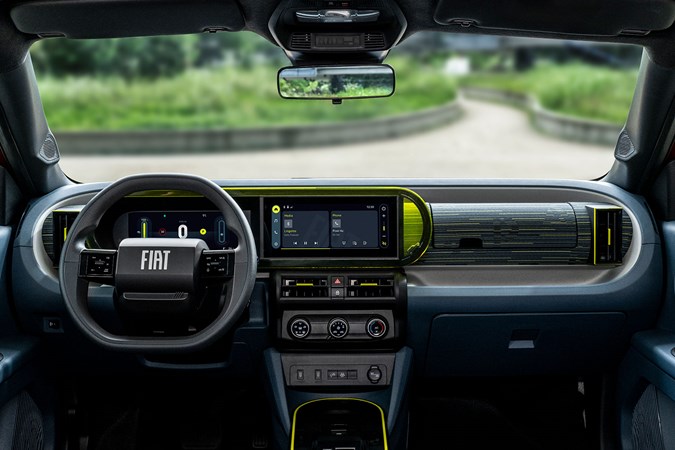
The oval motif is an homage to the famous Lingotto test track on top of the old Fiat building in Turin – there’s even a tiny moulded replica of the original Panda driving round it – while the unusual colours and textures all somehow work brilliantly together. Those up front have plenty of space, and headroom throughout is almost excessive.
In the back there’s plenty of knee room – at 5’11” I can easily sit behind my own driving position – but the high floor means my legs are lifted away from the seat base in a way I’m sure won’t be comfortable on a long journey. Kids will be more than happy, and adults will be fine for short hops. Meanwhile the boot is an impressive 361 litres.
Fiat Grande Panda Electric motors
At launch, the electric version of the Grande Panda gets only one choice of powertrain: an 83kW electric motor – that’s equivalent to 113hp – hooked up to a 44kWh battery pack. There is also a Grande Panda Hybrid, which uses a petrol-electric automatic drivetrain, but we haven’t been able to drive this yet.
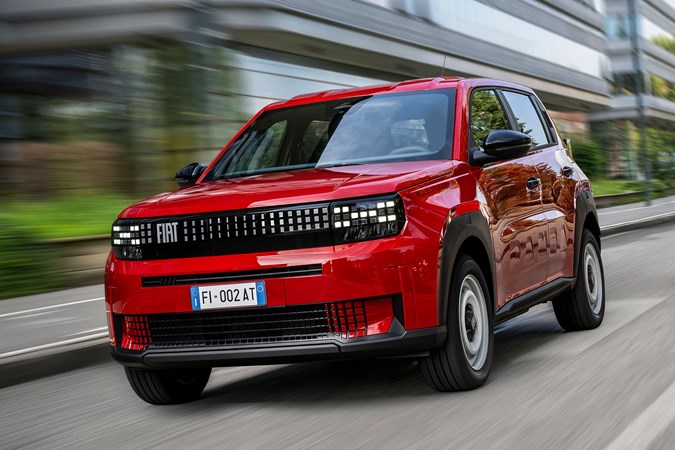
Top speed is 82mph, while the 0-62mph time varies with trim level. The entry-level (RED) version gets there in 11.0 seconds while top-spec La Prima needs 11.5.
Range and charging
Small and larger battery models are being considered for the future, but for now Fiat reckons 44kWh offers the right driving range for the right price. That 199-mile figure is only the official WLTP rating, however, and on the launch event we struggled to match that level of efficiency. After a morning’s moderately brisk driving over mixed roads, 50 per cent charge was suggesting just 53 miles of range were remaining.
When it comes to topping up, the Grande Panda is the first modern EV to include an integrated charging cable. Curled up behind what would have previously been the front grille, this is suitable for 7kW AC connections only, but a nice way to neaten-up a Wallbox installation. It will save you from wrestling and then finding suitable storage for a wet and dirty cable, too.
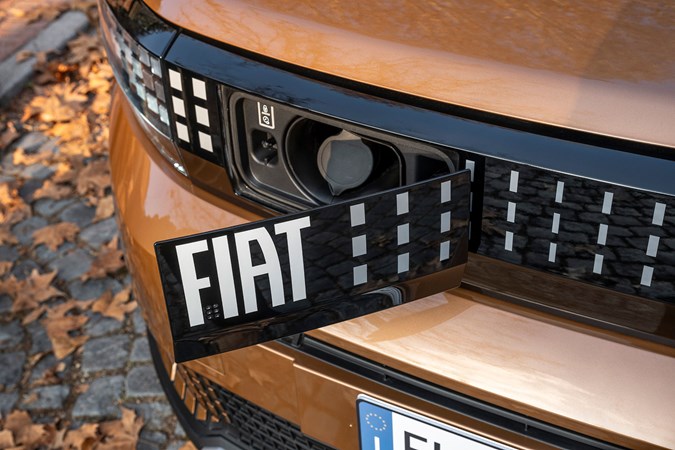
Standard DC charging is also available via a port at the back. This is limited to 100kW max speed; you’ll still get a 20-80% charge in 27 minutes, but only because the battery pack is so small. You can also have an 11kW connection back there. This cuts the 20-100% AC from 3 hours 43 minutes with the 7kW integrated cable to 2 hours 53 minutes, but requires a three-phase supply.
What’s it like to drive?
Given its style-forward approach, Fiat could have probably phoned-in the driving experience and gotten away with it. But gladly the Grande Panda is somewhat better than that. Precise, weighty steering gives the front end a directness that serves you well when hustling around a busy city centre.
The limits aren’t especially high, and the Grande Panda rolls noticeably in the corners, but it’s consistent and predictable and communicates what’s going on more than well enough without becoming tiring. You can, if you wish, fling it about a bit – just expect the front end to give up and wash wide sooner rather than later.
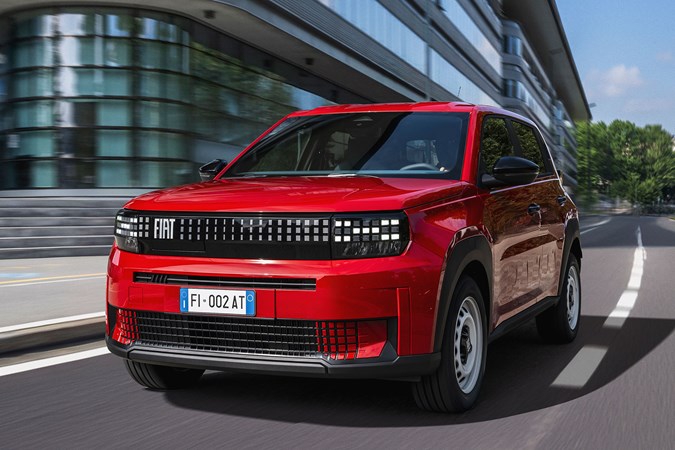
Given the kind of car it is, this all feels very well judged, especially since Fiat has done a great job of the ride comfort. This is especially impressive around town, where it soaks up potholes, speedbumps and cobbles with remarkable poise. The trade off is a slight jiggliness as you start to go faster – more noticeable as a passenger than a driver – and when we encounter particularly patchy tarmac, offset intrusions are more disruptive.
For an EV, it’s more mildly nippy than decisively punchy, but this and all of the above fits with the laid back, rather charming nature of the entire package. It’s still got enough performance to deal with the cut and thrust of commuter traffic and doesn’t feel out of its depth on the motorway, either.
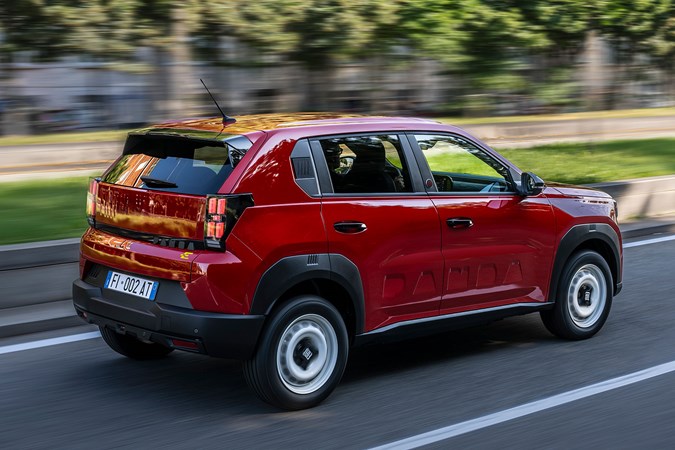
You will experience some wind and road noise at these speeds, but nothing I found to be excessive – conversation with passengers is still easily maintained.
What models and trims are available?
The Grande Panda Electric comes in (RED) or La Prima specification.
The (RED) version is priced £20,975 at launch, and comes with 10.25-inch infotainment screen, LED headlights, cruise control, rear parking sensors, lane keeping assist, autonomous emergency braking, 16-inch white steel wheels, and manual air-conditioning.
The La Prima gets 17-inch alloy wheels, automatic air-conditioning, built-in satnav, front parking sensors, rear-view camera, wireless phone charger and front heated seats. Plus the Bambox dashboard. This costs from £23,975.
Both versions represent strong value for money. Fiat says there’s no such thing as a ‘basic’ Grande Panda, and with these launch models we’d agree that’s certainly the case. In time, there may be cheaper, smaller battery versions, but these won’t necessarily make it to the UK.
What else should I know?
The Grande Panda is based on a new low-cost ‘multi-energy’ platform that parent company Stellantis is rolling out across its smaller models in a bid to compete with the influx of budget Chinese electric cars – and perhaps Dacia.
Called the Stellantis ‘Smart Car platform’ it’s already seen action as the underpinnings for the latest Citroen e-C3 and Vauxhall Frontera, and there are many more models to come. As the ‘multi-energy’ aspect suggests, it’s designed to accommodate conventional fossil fuel engines as well as electric power. Hence the Grande Panda Hybrid and the even cheaper non-hybrid Citroen C3 petrol.
At the time of writing (January 2025), Euro NCAP is yet to crash test anything based on this new structure.
Take a look at our explainer page if you want to know more about how we test cars – while our initial verdict on the Fiat Grande Panda can be found on the next page.



